2016.03.11
The 2011 Great East Japan Earthquake Reaches Its 5th Year Milestone. Onagawa Town & Me. 2016

My monthly visits to the Tohoku region have now dwindled into a few visits per year. The time since the disaster has weathered my heart and, this year –the 5th anniversary- its presence has particularly weighed heavy.
Ishinomaki, Rikuzentakata, Minamisanriku, Kesennuma, Shiogama, Hachinohe… I have developed a connection to various places over these past 5 years.
Onagawa Town is one such place.
A small port town, quiet and peaceful.
The first time I visited was in April of 2011, a month after the disaster.
I headed toward the port of Ishinomaki – a city embodying of the enormous damage sustained by the prefecture of Miyagi. There I met with representatives from the local government office and was stricken by the existing state of destruction. I worked my way through the devastated streets of the city and headed east on National Route 398.
For a fleeting moment I was relieved to see that Mangokuura had appeared to have survived the great tsunami.
But from atop a gentle sloping hill, I was suddenly struck again by the expanse of a sight so horrifying, that I was tempted to cover my eyes. ….So this is Onagawa.
Despite being at the apex of the colluvium, in other words the highest point of the slope, there were structures that had been laid flat by the force of the tsunami. They spoke of the entire city center that was now submerged in the ocean.
Debris was piled on either side of the road and, though treading ever so carefully, the bumpers and tires of the car continued to make contact with chunks of rubble. Countless numbers of buildings had been toppled, their roofs standing perpendicular along the road like walls.
Looking down upon the town from the hilltop hospital, the reality of the sight was so incomprehensible that I couldn’t escape the thought that it was all merely an illusory diorama.
There were people staring at the grim transformation of their beloved hometown, their hands held together in prayer.
I tried overlaying the scenery upon my own hometown. Although I had already seen many, many scenes of devastation in Iwate and Miyagi, I was overcome by an unbearable grief.
And the reality of countless numbers of family and friends being taken away so violently made me question, from deep within my soul, the existence of any god.
What could someone like me really do? Though my mind was in complete turmoil, the calm of the sea stayed clear in my memory.
Since the earthquake, I think I’ve visited the town about 10 times. In fact, I was in Onagawa with friends just three days before writing this post.
I’ve made intermittent visits and, every time, I’ve seen the progressive reconstruction of a devastated city, progression that at times was in tiny increments, and at times was in leaps and bounds.
When I stand on the hilltop, hands together, overlooking the scenery, I always solemnly trace the three-dimensional map of reconstruction in my mind.
2016. Due to an elevation of the city’s embankment that now extends out, that hilltop with the hospital, that I used to look up at back then, now feels more like a plateau.
Immediately following the earthquake, I could not have even imagined the reestablishment of a railway to Ishinomaki and Onagawa, but last year the city was connected by a line from Sendai.

The quiet path that once led from the sea to the station now resembles the stylish station fronts of Tokyo’s affluent neighborhoods.

The shops once beloved by the locals have now reopened in new locations. Longtime locals are now, together with visitors that have fallen in love with the city and stayed on, painting a new future for the city.
Despite having travelled all across Japan before and after the earthquake, not having been able to visit the coastal region of the Tohoku area is something I deeply regret to this day. That’s because the pre-disaster tranquility of Onogawa and its neighboring cities was something I never got to see with my own eyes. My first encounter with the city I was greeted with total destruction.
I have no doubt that had I known the landscape of the city prior to the disaster, I could have and would have felt a far greater happiness watching its regeneration than I do now.
So, upon this milestone, what I really want to say is that, everybody who has not yet visited any of the affected areas should definitely go visit a city in the Tohoku region, one that is still in the midst of reconstruction, and take a good hard look.
If you drive along the coastal highway, you can still see masses of innumerable lights from the evacuation housing attesting to the life that remains unchanged since 2011.
There are still many vacant lots where the rubble has been cleared away, where the old city has been “reset”, but land still lays in wait, vulnerable to the elements.
Even though the region has reached its 5-year milestone, there is still much, much more that needs to be done; and that is why it is not too late to lend support.
In fact, it is now, when memories begin to fade, that such conscientiousness is so crucial.
On my first visit to Onogawa I hadn’t even cleared away one piece of rubble and it left me stricken with a sense of powerlessness. However, I made my second visit to Onogawa with some friends from radio that supported the Tohoku recovery efforts. Through a local radio station called “Onogawa Saigai [Disaster] FM” we made friends and associates in the city. Our attempt to emanate a message about Onogawa to the world was but a small effort, but it created a motivation in me that has impacted me enormously.
There are young people in this city that have overcome the disaster, and will leave it behind to make their way successfully in the world.
There are people who will remain in the city, who love the city, who will continue the support its rejuvenation.
There is still a very long way to go in the recovery efforts of not only Onogawa, but of all of the coastal cities.
I believe it is good, for each and every person, to have one or two cities that are so close to their hearts that the cities’ aspirations may as well be their own.
Unfortunately, “Onogawa Saigai FM”, my initial link to this city, will go off the air at the end of the month, leaving behind a five-year legacy.

Some things continue; and some things end. Regrettably, that is how it is. However, people bond; and simply by having people that share a love for a city, that city will resurrect and revive. Each person who goes to visit the devastated areas adds a new link to the chain of well-wishers. It is my hope that the chain will continue to grow and encircle all of the cities of the Tohoku region.
And in this year, 2016, and on this milestone, I feel it more deeply and stronger than ever.
March 11, 2016
.
.
.
It is 2011. These are photos taken from a small sampling of the videos I took on my 3rd visit to Onogawa. I tried contrasting them against photos of the same locations that were taken in 2009.
Looking retrospectively at the city and the aftermath, today, I am once again determined to keep these emotions that manifest themselves securely in my heart.
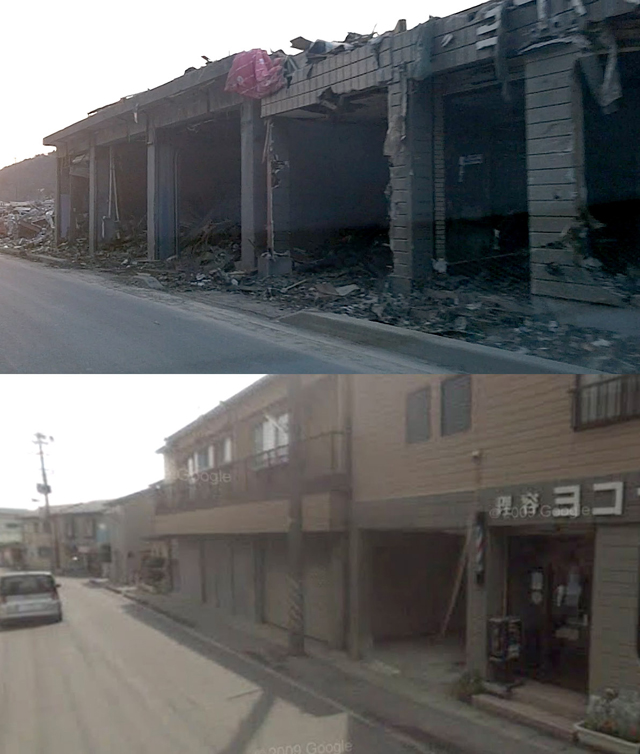
A gently sloping hill far from the sea. It is a downward hill that leads from Ishimaki to Onogawa.
I driven up and down this street many times, giving rides to all kinds of people. Many of those people had already seen areas impacted by the disaster, yet when I brought them here, the place would somehow render them speechless.
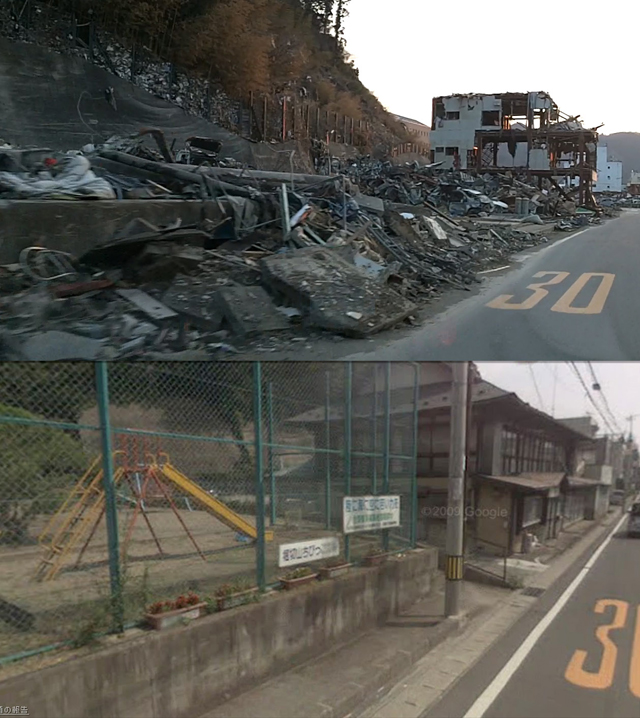
The park that is visible here is indistinguishable in the 2011 picture.
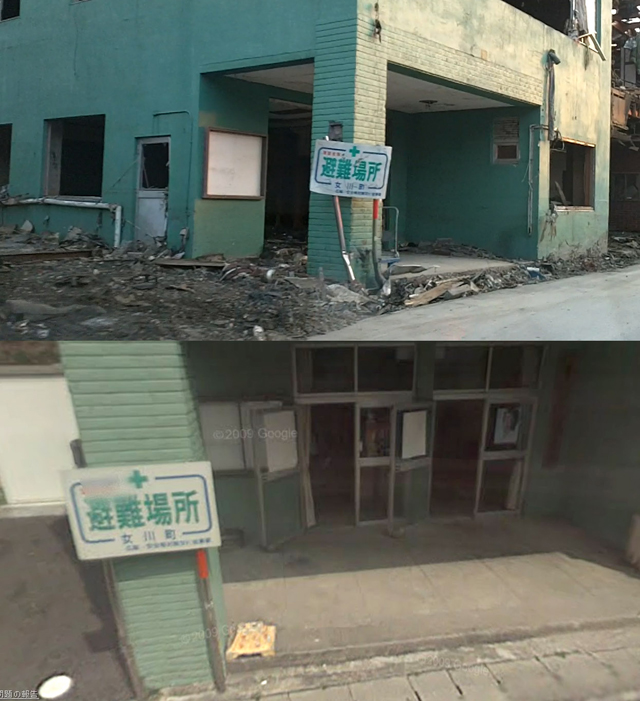
The “Evacuation Center” that had its rooftop swept by the tsunami. A disaster like this occurs only once every 1,000 years, but it completely throws to the wind any normal sense of safety or security.
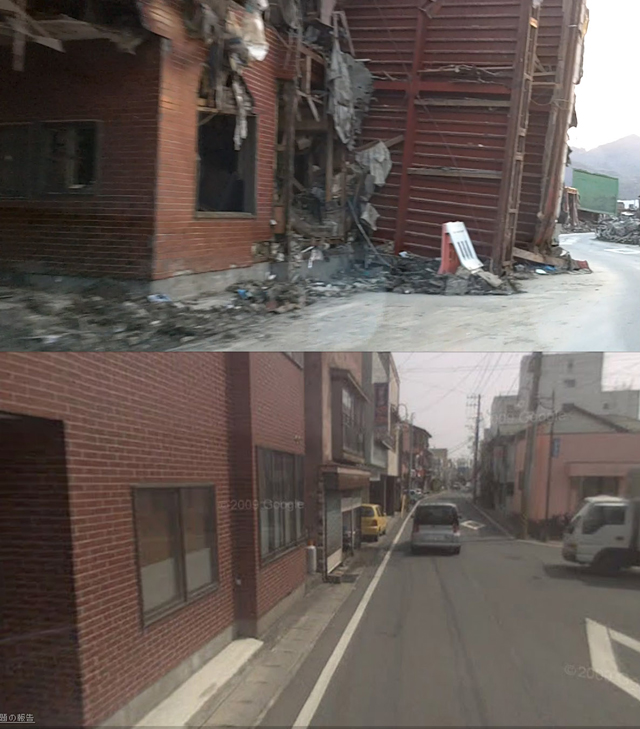
There is no building where a building once stood. And there is a building that was pushed here from who-knows-where, now laying on its side and protruding out into the road.
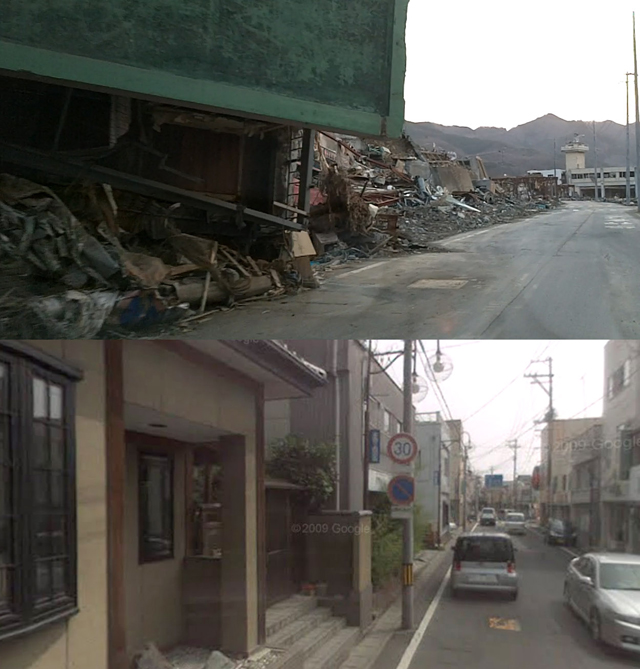
The reinforced concrete roof that used to face skyward now lay on its side in the road. Apart from the location of yellow manhole cover, there is not one thing that can prove that these two places are of one and the same.
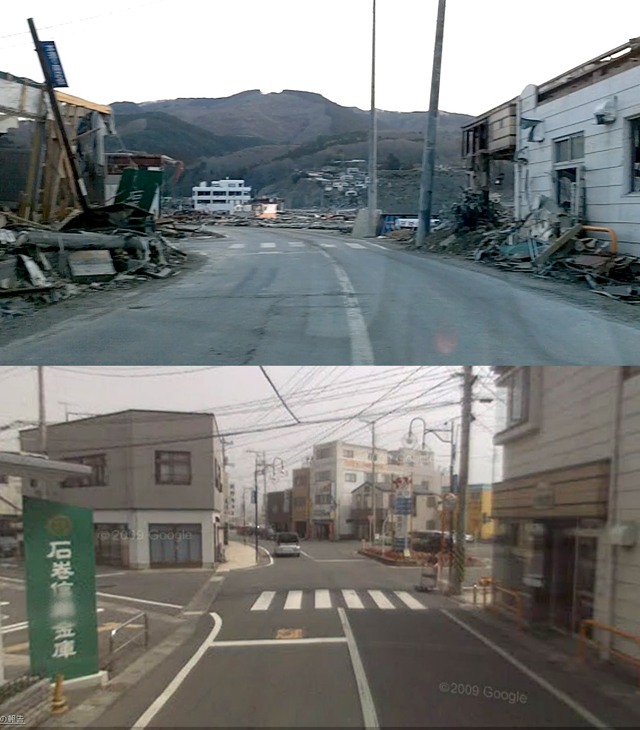
Beyond the curve in the road that leads toward the sea is a far off mountain that, prior to the tsunami, could in no way have been visible from here.
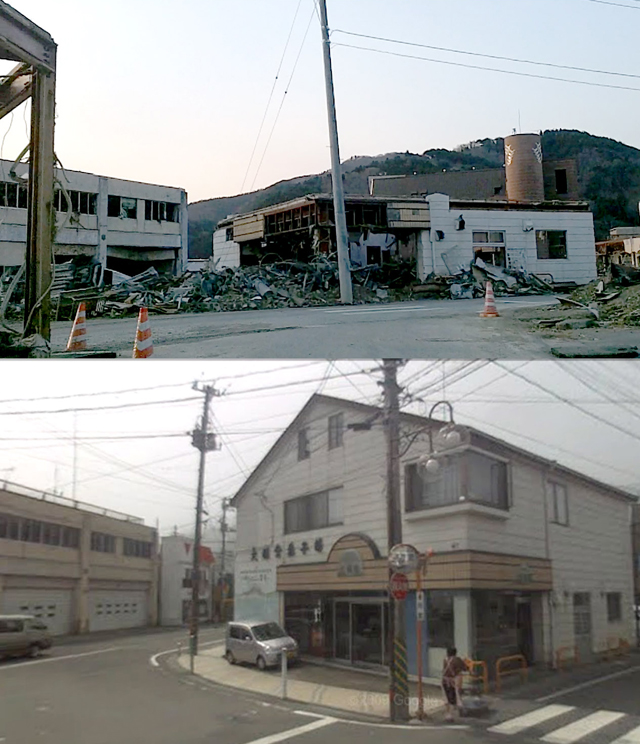
A shop that is tragically missing its second floor. Swept away by the waves despite being at such a high altitude, it speaks of the tsunami’s massively destructive power.
Take a moment…
Restore your soul along with the disaster-afflicted areas.





